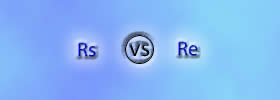Difference between MDF and Plywood
Key difference: MDF stands for medium-density fiberboard. It is an engineered wood product. It is created by breaking down wood residuals into wood fibers. These wood fibers are then combined with wax and a resin binder. The mixture is then flattened and made into panels by applying high temperature and pressure. Plywood, on the other hand, is a type of manufactured wood panel. It is made by gluing together plywood layers, also called veneers. Plywood has various advantages over traditionally wood. It is flexible, inexpensive, workable and re-usable.
 MDF stands for medium-density fiberboard. It is an engineered wood product. It is created by breaking down wood residuals into wood fibers. These wood fibers are then combined with wax and a resin binder. The mixture is then flattened and made into panels by applying high temperature and pressure.
MDF stands for medium-density fiberboard. It is an engineered wood product. It is created by breaking down wood residuals into wood fibers. These wood fibers are then combined with wax and a resin binder. The mixture is then flattened and made into panels by applying high temperature and pressure.
MDF is quite similar to traditional plywood, but has a number of advantages over it as well. Like plywood, MDF can be used as a building material. MDF’s advantage is that as it is made up of separated fibers. This allows it to be denser than plywood, as well as stronger and denser than particle board.
Furthermore, MDF does not contain knots or rings like natural wood. This means that the MDF is more uniform in nature and is easier to cut and work with than traditional wood. MDF has a hard, flat, smooth surface that makes it ideal for veneering. MDF can also be glued, doweled or laminated. However, MDF is similar to wood in the manner that it has the possibility of splitting while working with it, especially while installing woodscrews without pilot holes. Also, MDF does not hold smooth-shank nails well or fine-pitch screws.
Formaldehyde resins are often used to bind MDF together during manufacture.
A disadvantage of working with MDF is that when it is cut a large quantity of dust particles and the urea-formaldehyde is released into the air. This is why it is even more important for one to use protective gear while working with MDF, especially a respirator. It is also recommended that one should work with MDF in a controlled and ventilated environment.
Additionally, the MDF constantly emits urea-formaldehyde and other volatile organic compounds into the air for at least several months after manufacture. These compounds pose health risks at sufficient concentrations. Hence, it is recommended that MDF be painted on all sides of the finished product in order to seal in the urea-formaldehyde. Wax and oil finishes may also be used as finishes; however they are less effective at sealing in the urea-formaldehyde.
 Plywood, on the other hand, is a type of manufactured wood panel. It is made by gluing together plywood layers, also called veneers. These veneers are glued together with adjacent plies having their wood grain at right angles to each other. This allows them to form a composite material. Cross-graining, i.e. having the wood grain at right angles to each other, reduces the tendency of wood to split, as well as reduces expansion and shrinkage. It also makes the strength of the panel consistent across both directions.
Plywood, on the other hand, is a type of manufactured wood panel. It is made by gluing together plywood layers, also called veneers. These veneers are glued together with adjacent plies having their wood grain at right angles to each other. This allows them to form a composite material. Cross-graining, i.e. having the wood grain at right angles to each other, reduces the tendency of wood to split, as well as reduces expansion and shrinkage. It also makes the strength of the panel consistent across both directions.
Plywood has various advantages over traditionally wood. It is flexible, inexpensive, workable and re-usable. Furthermore, it can usually be manufactured locally. Plywood is also resistant to cracking, shrinkage, splitting, twisting and/or warping. It also has a high degree of strength. All these attribute combine to make plywood one of the most widely used wood products.
Plywood is further divided into:
- Softwood plywood - Is usually made either of cedar, Douglas fir or spruce, pine, fir or redwood and is typically used for construction and industrial purposes.
- Hardwood plywood – Made from hardwood, often from birch and used for demanding end uses. Birch plywood has excellent strength, stiffness and resistance.
- Tropical plywood - Made from mixed species of tropical wood.
- Special-purpose plywood
- Aircraft plywood
- Decorative plywood (overlaid plywood)
- Flexible plywood
- Marine plywood
- fire-retardant plywood
- moisture-resistant plywood
- sign-grade plywood
- pressure-treated plywood
Image Courtesy: avsforum.com, unitedplywood.in









Comments
value dave
Fri, 10/20/2017 - 00:00
Add new comment